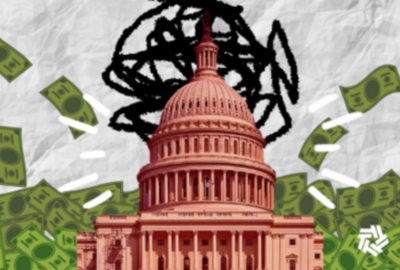Transparency advocate sees hope in 3 open-data initiatives
The year-old DATA Act is forcing agencies to standardize their financial data. And, even without a law, Congress and regulatory agencies slowly are doing the same...
“I’m always frustrated,” said Hudson Hollister, the executive director of the Data Transparency Coalition. For years, he has urged the government to embrace a standard data format that would make its critical information more user friendly.
“The technology has been around for a little while. Now for the first time, the policies are changing,” he said in an interview with Federal News Radio. “For the first time, government managers are realizing that, if they adopt consistent data formats for government information, it really benefits everybody.”
Standardizing data is a long, technical and often tedious process, especially for large organizations like agencies and Congress. But at the end of that road, Hollister envisions federal managers being
able to apply big-data analytics more easily to the policymaking process, citizens being able to better track and understand legislation and a simpler filing process for federal contractors and grantees.
Three recent developments have given Hollister reason to mix optimism with that frustration. The year-old DATA Act is forcing agencies to standardize their financial data. And, even without a law, Congress and regulatory agencies slowly are doing the same with legislation and regulations.
Congress builds U.S. Legislative Model
Some congressional offices have adopted a standard data format called the U.S. Legislative Model to make it easier to see how proposed legislation would change existing laws. After spending many months in development, the format has reached the stage where it can be applied, Hollister said.
Rather than having every proposed legislative change noted on documents that say something like “strike this title and insert this” or “after this word, insert that,” the model should enable electronic tracking of the changes in a single file.
“Many people are familiar with Microsoft Word and its red-lining function,” he said. “Imagine if you could do that with law — if the drafters of laws could do that with laws. That’s the kind of platform that could be built. But you need the infrastructure, you need the same data model to be used across the board.
The Amendment Impact Project, the first attempt to use the format, aims to show how a proposed amendment would affect an underlying bill. It is currently under development. While promising, Hollister said it will only work if it’s adopted by all congressional offices that handle legislation, from the lawyers who draft bills to the publishers who put them online.
“They all need to embrace the same data format in order for these projects to be more than a demonstration, but a way that people are doing their jobs,” he said.
CFPB leads regulatory agencies with eRegulations platform
The same transformation is underway at regulatory agencies, Hollister said.
The Consumer Financial Protection Bureau has converted regulations into searchable data on its eRegulations platform. It’s made CFPB rules easier to navigate, he said.
“Instead of seeing a long, sequential, plain-text document, this platform lets you navigate back and forth between sections and see where you are,” he said. “Eventually, we’ll get to things like automatic redlining.”
More broadly, the General Services Administration’s digital service team, 18F, is investigating ways to adopt a standard data format for proposed rules. With such a format, it could build software that lets users track proposed changes and comment on specific parts of proposals.
Small Business Administration serves as pilot for the DATA Act
The year-old DATA Act requires agencies to use a standard data format for all of their financial information by 2017. The Treasury Department and the Office of Management and Budget have given agencies the format. But now the hard work of translating complex accounting, budgeting, payment and award information into the format begins.
The Small Business Administration did just that in what Hollister called a “groundbreaking exercise.” GSA’s 18F has published a description of the pilot and the code used on its website. If other agencies follow suit, as the law mandates, then it would increase the data’s value exponentially, according to Hollister.
“You can take a particular grantee or contractor and you can see all the grants or contracts that they’re getting from all the agencies,” he said. “Assuming ‘program’ is identified consistently, you can take one of SBA’s programs and see all the grants and contracts it puts out in one place, electronically, without having to comb through anything.”
Treasury and OMB officials, along with Comptroller General Gene Dodaro, are scheduled to give an update of DATA Act implementation during a hearing Wednesday afternoon of the House Oversight and Government Reform Committee.
Copyright © 2025 Federal News Network. All rights reserved. This website is not intended for users located within the European Economic Area.
Related Stories





